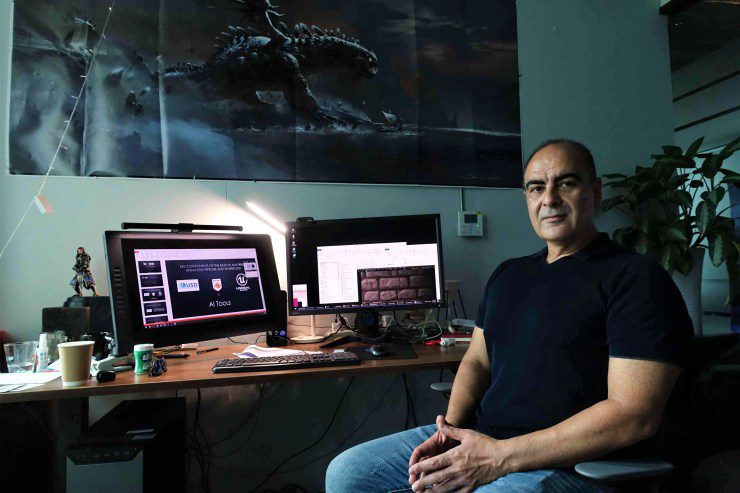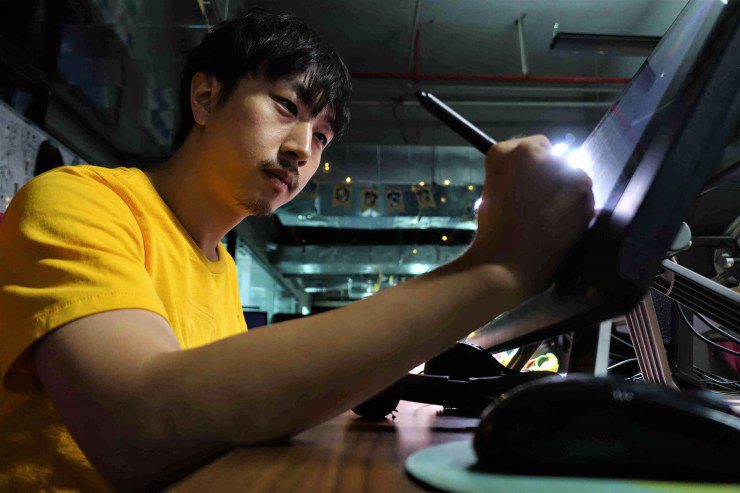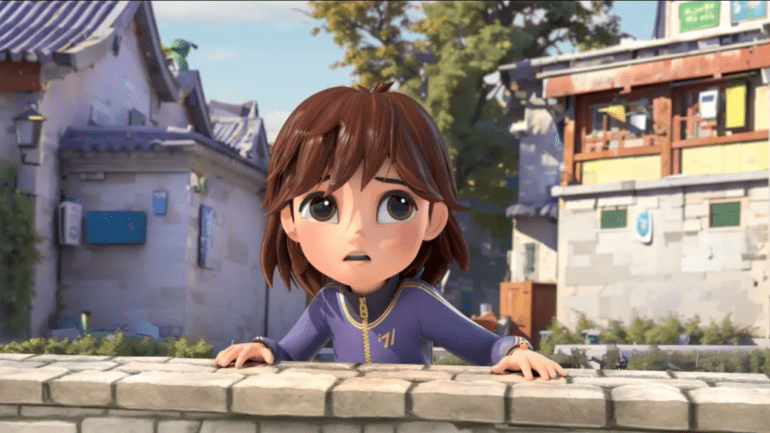TL;DR:
- Base Media, a Beijing-based animation firm, explores the potential of generative artificial intelligence (AI) in animation production.
- Founder Chris Bremble’s encounter with AI’s capabilities ignited a recognition of its inevitable impact on the industry.
- While generative AI has not yet become standard in post-production, Hollywood is already grappling with its implications through strikes.
- Base Media collaborates with iQiyi, a Chinese streaming giant, to harness AI’s power for animation production.
- Animation’s most resource-intensive aspect—creating intricate 3D locations—is put to the AI test.
- AI successfully replicates the style of iQiyi’s animation series “The Roofus,” blurring the lines between AI-generated and human-crafted elements.
- The technology cuts production time from over eight weeks to three, augmenting creative capabilities.
- The integration of AI into animation raises concerns about copyright in the U.S. market.
- The potential to redefine animation production by blending AI innovation with human creativity is on the horizon.
Main AI News:
In the rapidly evolving world of visual effects and animation, the integration of generative artificial intelligence (AI) is ushering in a new era of creativity and efficiency. This transformative technology, although not yet widespread in the movie post-production sector, has already stirred discussions and concerns within Hollywood and beyond. As the debate on its impact rages on, an animation powerhouse in Beijing is embracing the potential of generative AI to reshape the landscape of animation production.
Chris Bremble, the visionary founder of Base Media, a Beijing-headquartered animation and visual effects firm, vividly recalls the moment he was introduced to generative AI’s capabilities at an industry conference back in 2018. The demonstration showcased software that could remarkably replicate the intricate patterns of smoke from a mere photograph in a matter of seconds. Bremble’s initial apprehension quickly gave way to a realization: the advent of generative AI was inevitable, and its integration would redefine the industry.
Today, five years later, while generative AI has yet to become a standard practice in the movie post-production domain, the entertainment world is feeling its tremors. Hollywood actors and writers, cognizant of the technology’s potential impact on their craft and employment, have raised their voices through strikes and protests. Parallelly, in China—where Base Media has a presence in multiple cities—reports are emerging of layoffs in the video gaming sector, attributed to the encroachment of generative AI. Bremble, ahead of the curve, understands the significance of embracing and mastering this technology.
Base Media, renowned for its contributions to blockbuster movies like “Black Panther: Wakanda Forever,” the “Star Wars” limited series “Obi-Wan Kenobi,” and Chinese cinematic gems such as “The Wandering Earth,” has undertaken a pioneering endeavor in collaboration with Chinese streaming giant iQiyi. This venture aimed to explore the far-reaching capabilities of generative AI, specifically focusing on animation production’s most intricate and resource-intensive aspect: creating 3D locations.
Wang Huiyu, the head of Wonderworks—an animation division under iQiyi—underscored the challenge of crafting immersive digital landscapes. In animation, meticulous attention is paid to the authenticity of every element, requiring the virtual construction of entire settings. She revealed that nearly 30% of animation production efforts are dedicated to creating these intricate locales.
To put generative AI to the test, Wang tasked Base Media with a 90-second script revolving around a girl’s quest to find her friends. The script was inspired by iQiyi’s animation series “The Roofus,” which was meticulously fed into the AI system, aiming to replicate its distinctive style and appearance. Led by Igor Lodeiro, Base Media’s visual effects supervisor, the team embarked on the project with skepticism but was met with astonishing outcomes.

Visual effects supervisor Igor Lodeiro at Base Media’s Xiamen office. He is looking at how much AI can replace the company’s existing animation production. Source: Charles Zhang
The creative process involved a meticulous dance between human craftsmanship and AI innovation. Initial frames of the test video showcased an uncanny resemblance to “The Roofus” animation series, proving the AI’s potential. The final product, an exquisite animation sequence, seamlessly melded the AI-generated locations with meticulously crafted characters, all brought to life in vivid detail. The project, which would have taken over eight weeks to complete with a human animation team, was expertly executed in just three weeks with the aid of AI.
What’s most intriguing is the transparency with which generative AI integrates into the animation process. The video’s quality is so impeccable that discerning AI’s role becomes a delightful challenge for viewers. For Bremble, this seamless integration is a testament to the technology’s prowess and its promise to augment the capabilities of creative talent.
The future holds boundless potential. As Lodeiro envisions, AI’s role might extend beyond tedious production phases, potentially revolutionizing storytelling and aesthetics. The prospect of pushing creative boundaries to yield unprecedented visual wonders is exhilarating, giving rise to unique and captivating animations that transcend convention.
While Base Media embraces AI’s potential to elevate creativity and production efficiency, it treads cautiously. The cultural and regulatory landscape varies across the globe, leading to differing perspectives on AI’s role in creative work. While Chinese clients eagerly advocate for AI’s integration, U.S. clients are more concerned about potential copyright issues, requiring explicit agreements regarding AI usage.
Ultimately, the melding of generative AI and animation is not just a technological advancement but a shift in how artistry and technology collaborate. It’s a journey that Base Media is navigating with vision and finesse, harmonizing AI’s power with the essence of human creativity. As the animation world braces for transformation, it is the delicate equilibrium between innovation and tradition that will define the next chapter in this mesmerizing tale of art and AI.




Concept artist Jason Song draws on a tablet at Base Media’s Xiamen office. His bosses said good drawing skills and creativity will still be core skills needed in the industry, even in a generative AI world. Source: Charles Zhang
Conclusion:
Base Media’s strategic foray into generative AI demonstrates its commitment to innovation in animation production. The seamless integration of AI and human creativity promises to reshape the industry, optimizing production efficiency and offering new avenues for creative expression. As Hollywood grapples with AI’s implications, this pioneering step sets a precedent for the future of animation, where technology and artistic ingenuity collaborate to produce captivating visual experiences.

